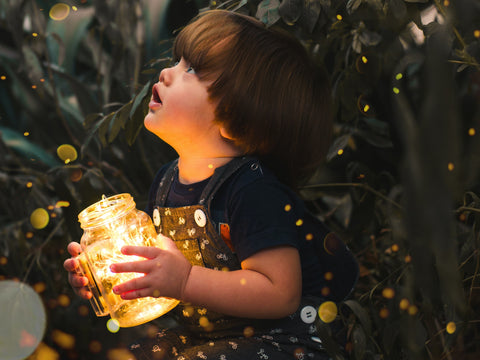For children (and, okay, maybe us adults), the highlight of Christmas is that thrilling moment when you finally get to rip the paper off your presents and find out what goodies Santa has brought this year. Of course it’s natural to be excited about getting new toys, books, clothes, gadgets and all sort of other things. And yes, it’s normal to look forward to using them for the first time. But like so many pleasures in life, it’s also easy to get carried away by the excitement and lose sight of what’s really important: the love and care that someone has shown by picking out a gift, not the gift itself.
In the last few decades, it sometimes feels like the joy of sharing at Christmas has given way to cold materialism, with gifts opened then tossed aside to see what surprise the next package brings. But it’s a trend that can be reversed in our own homes by teaching children the value of gratitude, and remembering that it’s not all about how much stuff we get.
Gratitude builds resilience
It’s long been noted that in adults, gratitude often goes hand in hand with kindness and generosity, which in turn help people to get along better with others and live happier, more contented lives. More recently, this has been found to be true in children too. For example, a 2020 study published in the Journal of Happiness Studies found that there is a link between gratitude and happiness in children as early as the age of five, and especially when the gratitude is specific rather than generalized.
These findings seem to hold true throughout childhood. A separate study of 11-13 year olds published in the Journal of School Psychology found that those who were grateful were also happier, more optimistic, and had better social support networks, both giving and receiving support from others. Similarly, a study of 14 to 19 year olds published in Psychological Assessment found that teens who were grateful were also more satisfied with their lives and used their happiness to contribute to their communities. They were also found to be less envious, materialistic and depressed than less grateful teens. And on it goes up into adulthood, with grateful adults being more resilient to life’s tough times, and living longer, healthier lives.

It’s more than just saying ‘thanks’
So now we know the benefits, how exactly do you teach gratitude? Well the first thing to say is that teaching children to say ‘please’ and ‘thank you’ is important, but these words shouldn’t be confused with gratitude itself. Gratitude is more of an attitude. It’s a way of seeing the world and our place in it. As a result, it takes time to really teach gratitude to children, because it’s more of a way of life than a behavior.
That said, please and thank you shouldn’t be overlooked. Teaching children to use these words is an excellent first step, as it reminds children to take a moment to think about expressing gratitude before moving on. One tradition that has sadly fallen out of favor is the sending of thank you cards after Christmas and birthdays. Why not encourage your children to sit down and write thank you cards for the presents they receive this Christmas?
Small children are naturally egocentric, and must be taught that the world doesn’t revolve around them. Begin by encouraging them to share toys with the other children they play with, and to think about others’ feelings.
Demonstrating sharing behaviors is also important, as children, and especially young children, learn by example. On holidays like Halloween, encourage children to share the treats they get with others who may have less. Donating outgrown and unused toys – and encouraging children to choose an item or two to pass on – is another way of teaching them to let go of material possessions and give to those who might need them more.

Turning gratitude into a habit
As children grow older, gratitude becomes less about sharing the things they have (and recognizing that others have less than they do), and more about cultivating a grateful spirit.
As a family, you might also want to set aside some time either daily or weekly to talk about the things in your lives that you are grateful for, and how they have made you feel this week, or you might want to keep a gratitude jar, to post notes about the things you are grateful for. Don’t forget, children learn by example, so parents modeling gratitude by listing the things they are grateful for reinforces the idea in children’s minds.
Teenagers can also be encouraged to start a gratitude journal to cement the habit, taking the time to think about the things in their lives that they are thankful for, whether it’s friends, family, teachers, or their own natural abilities. It’s the act of noticing these little things that makes the difference: it can have a profound impact on a person’s outlook in life, reminding them that there’s always some good to be found, even when times are tough.
Ultimately, gratitude is most impactful when it translates into outward behaviors. Older children can be encouraged to take on volunteer work, such as helping at a local shelter or doing yard work for neighbors, to pay forward the things they are grateful for.






